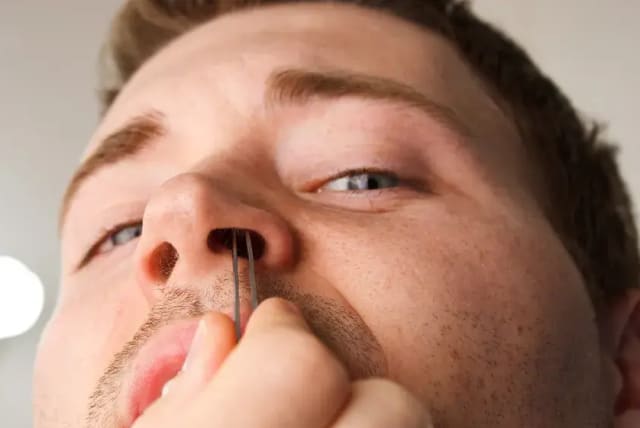The risks of nose hair removal: Why you should leave them there

Explore the lesser-known health implications of removing nose hair through plucking or waxing, an often underestimated grooming practice.
Many people choose to pluck or wax their nose hairs, considering it a simple act of self-grooming. However, this seemingly inconsequential practice can have diverse health effects.
While shaving or undergoing laser treatments on areas like the legs, arms, or pubic region are common choices, it's advisable to avoid touching and removing the hairs inside your nose.
Dr. Don J. Beasley, a board-certified otolaryngologist from Idaho, cautions against nose hair removal due to the sensitive nature of the nose, which houses numerous blood vessels and mucous membranes. In an interview with The Huffington Post, he explained that nose hair removal, whether done by yourself or at a salon, can heighten the risk of infection, especially if performed incorrectly or without adhering to proper hygiene practices. This can lead to complications such as folliculitis or even a nasal infection called cellulitis.
Understanding the significance of nose hairs
It's essential to comprehend the purpose served by nose hairs.
According to Healthline, nose hair helps keep your lungs safe from things like dust, pollen, and allergens. Even if they make it in the nose, the hairs are covered in mucus, which can trap them there until they are safely blown out of the body via sneezing.
These hairs also help keep the nose from becoming too dry by trapping moisture.
Understanding the risks associated with nose hair waxing
Removing nose hair via waxing gets rid of this filtration system crucial for maintaining health and preventing infections such as nasal vestibulitis and nasal abscess, warns Dr. Nicole Aaronson, a board-certified otolaryngologist in Delaware. She explained to The Huffington Post, "While waxing doesn’t necessarily weaken the immune system, it does breach the skin barrier by creating openings for bacteria to get into the deeper tissues, thus creating the opportunity for infection."
Trimming as a safer alternative
While you might be tempted to get rid of nose hair by plucking it, this also comes with risks. For one thing, both plucking and waxing can lead to ingrown hairs, the Cleaveland Clinic said.
In addition, another possible risk is nasal vestibulitis, a common nasal infection, which can occur following nose hair plucking, as detailed in a study from researchers at Israel's Sheba Medical Center.
So what can you do? You can trim it.
This would be done using special electrical trimmers that help you get into your nose and trim the hairs down to a better size, should they be too long and sticking out of your nostrils. They are easy to use, safe, and require minimal effort.
Jerusalem Post Staff contributed to this report.
Jerusalem Post Store
`; document.getElementById("linkPremium").innerHTML = cont; var divWithLink = document.getElementById("premium-link"); if (divWithLink !== null && divWithLink !== 'undefined') { divWithLink.style.border = "solid 1px #cb0f3e"; divWithLink.style.textAlign = "center"; divWithLink.style.marginBottom = "15px"; divWithLink.style.marginTop = "15px"; divWithLink.style.width = "100%"; divWithLink.style.backgroundColor = "#122952"; divWithLink.style.color = "#ffffff"; divWithLink.style.lineHeight = "1.5"; } } (function (v, i) { });

